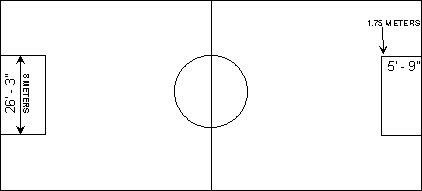|
For further information
go to
US Quad Rugby Association
Home
WHO CAN PLAY?
Players may have various disabilities
that preclude their play in able-bodied sport competition. Players
must have a combination of upper and lower extremity impairment
to be considered as eligible to participate. Most of the players
have sustained cervical level spinal injuries and have some
type of quadriplegia as a result. Players are given a classification
number from one of seven classifications ranging from 0.5 -
3.5. The 0.5 player has the greatest impairment and is comparable
to a C5 quadriplegic. Of those eligible to participate, the
3.5 player has the least impairment and is similar to a C7-8
incomplete quadriplegic. Both male and females are encouraged
to play, and because of the classification process gender advantages
don't exist.
THE GAME
Four players from each team are
allowed on the court at a time. Classifications of the four
players on the court must total no more than 8.0 points at one
time. The action occurs on a regulation-sized basketball court
with some minor changes.

A goal line at each end of the
court measures eight meters.
A key area extends from the goal
line and is 1.75 meters deep.
During the games team players pass
a volleyball back and forth while advancing into the opponent's
half court and then crossing over the goal line with the ball
in one player's possession. While the offense is trying to advance
the ball, the defense is trying to take it away and keep the
opposing team from scoring. Certain restrictions apply in the
key area. One restriction is that only three defensive players
are allowed in the key, and if a fourth enters, a penalty can
be assessed or a goal awarded. Another restriction is that an
offensive player can only stay in the key area for ten seconds.
Otherwise a turnover will be assessed.
BASIC RULES
- A player has 15 seconds to advance
the ball into the opponents half-court.
- Fouls are assessed and penalties
can include awarding of a goal, a timed penalty or a turnover.
- A player with the ball has unrestricted
pushes but must pass or dribble the ball every 10 seconds
or a turnover is awarded.
|